Mexico's road to independence from Spain and France was long and complex, and its artists and art institutions reflect both nationalism and the continued influence of Europe.
c. 1750–1900 C.E.
Mexico's road to independence from Spain and France was long and complex, and its artists and art institutions reflect both nationalism and the continued influence of Europe.
c. 1750–1900 C.E.
We're adding new content all the time!
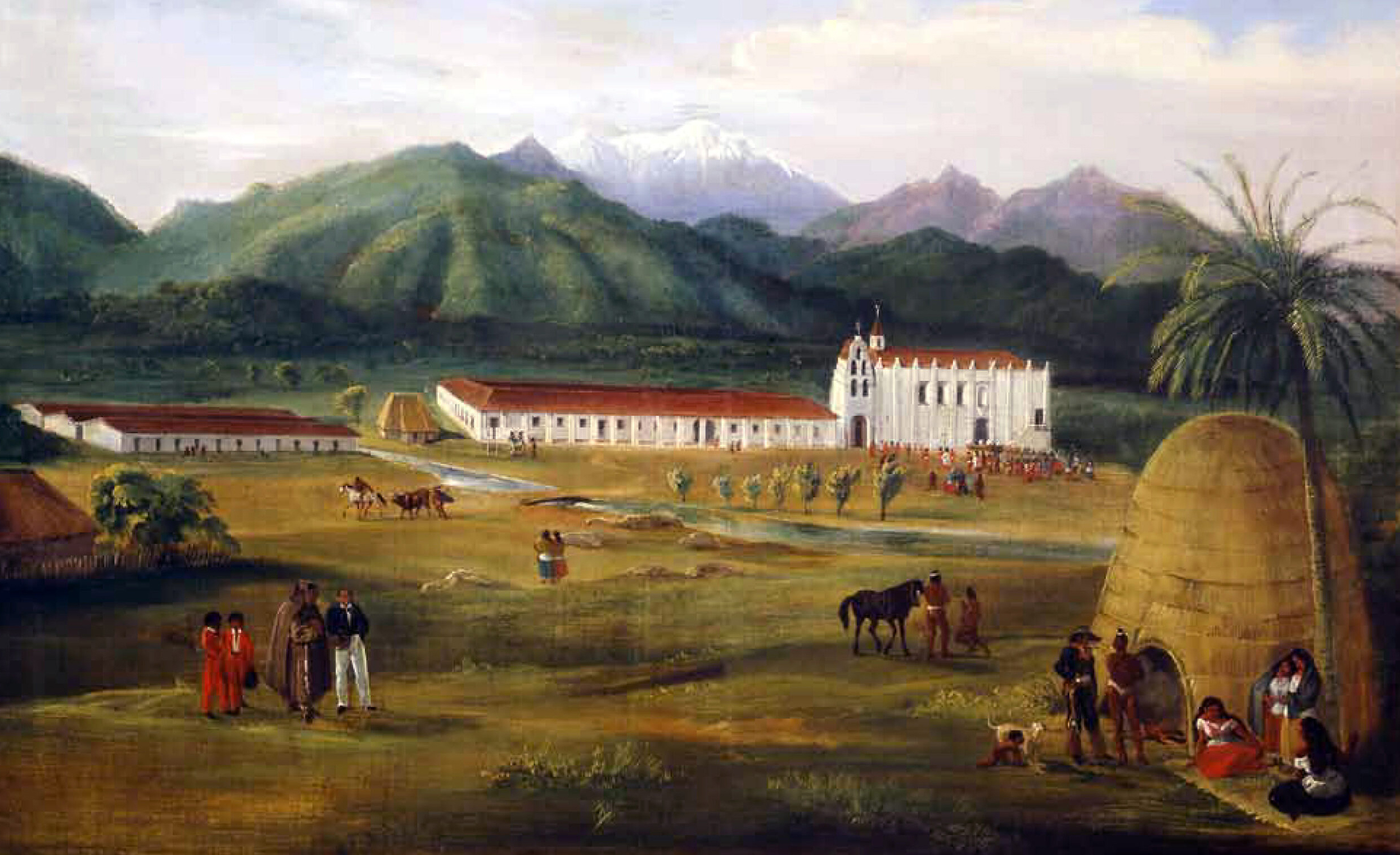
Deppe's San Gabriel Mission portrays an imagined mission landscape—one still very much tied to a European colonial project.
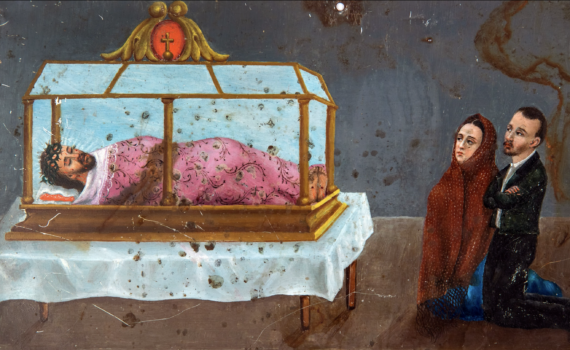
This token of private devotion after a near-death experience speaks to how smaller communities in Mexico resourcefully made their own religious images
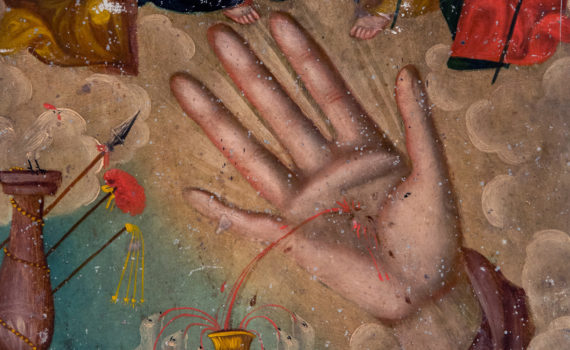
A small painting on tin shows a complex image of Saint Francis's hand bleeding into a cup, surrounded by lambs drinking the blood.
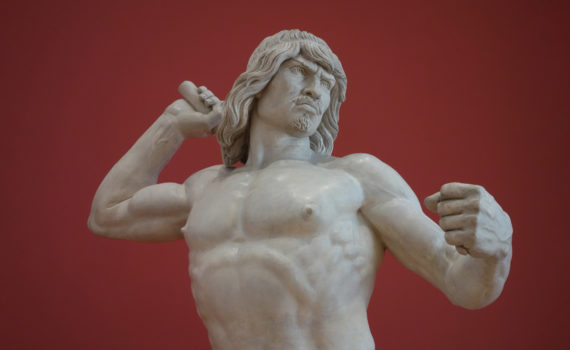
Vilar's sculpture of Tlahuicole draws on the style of Neoclassicism to show the heroic Tlaxcalan warrior Tlahuicole who battled the Aztecs
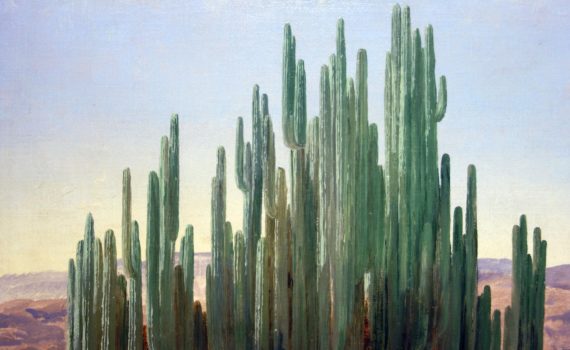
An enormous cactus in the Mexican landscape is captured in amazing detail by the painter José María Velasco in teh 19th century
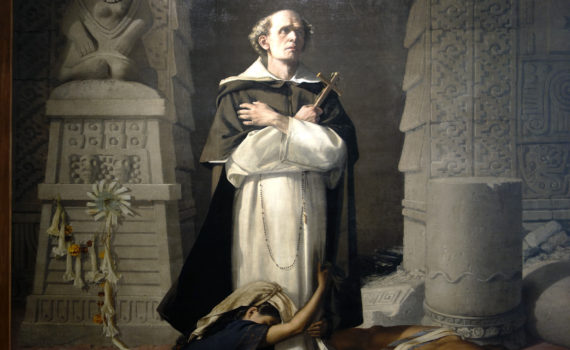
Parra uses a 16th-century friar to comment on 19th-century events, as artists began to make a new art for a new nation.
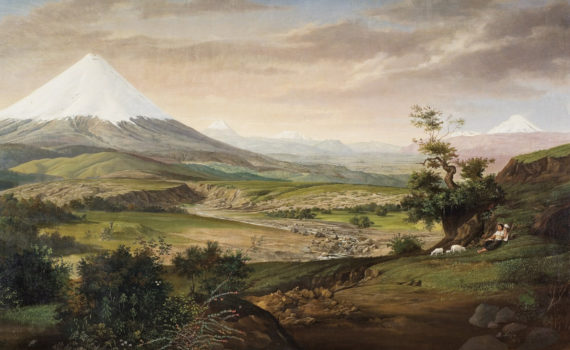
Latin American artists in the nineteenth century developed interests in painting the local landscape as a way to create a sense of pride in their country’s past, present, and future.
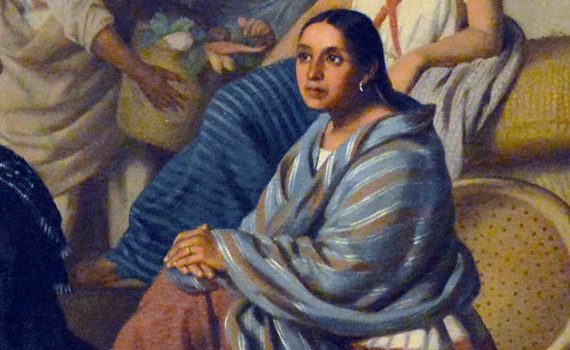
Gutiérrez wanted to create art that would change the perception and status of the artist in Mexico.
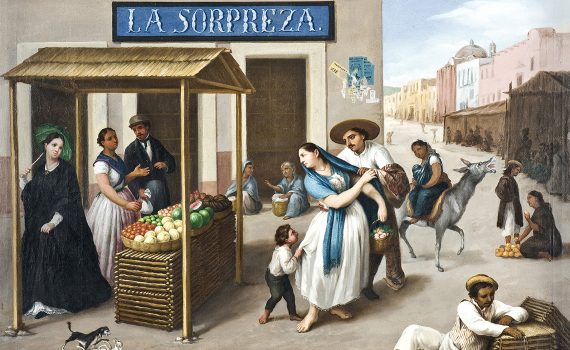
What exactly is the surprise that this painting holds in store for us? There are several interpretations.
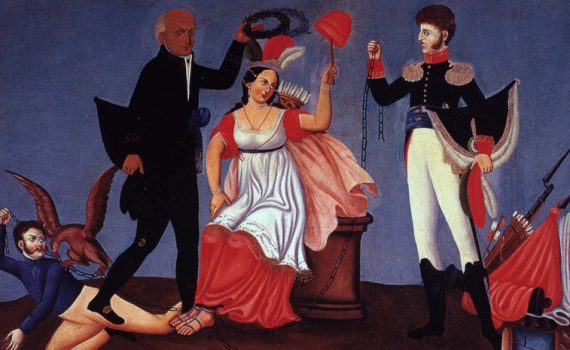
Revolutionary priests and an ex-member of the Spanish military led a charge for independence and equality for some.
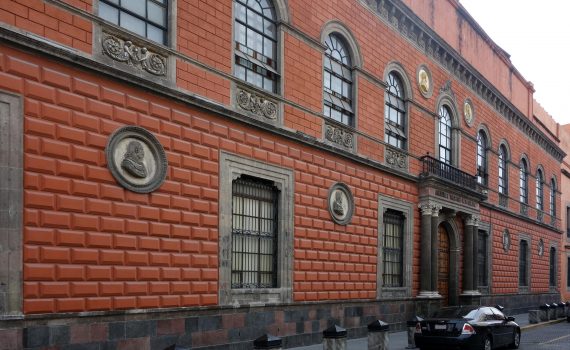
Inspired by art academies in Europe, Mexico founded its own in 1785, the first in America.
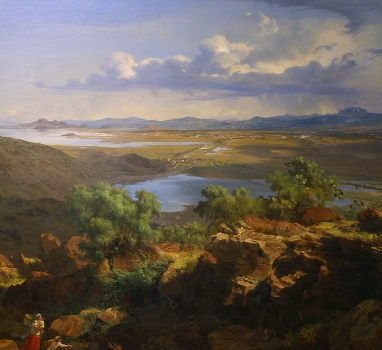
Velasco shows us the history of the land, both the natural and the built environments.